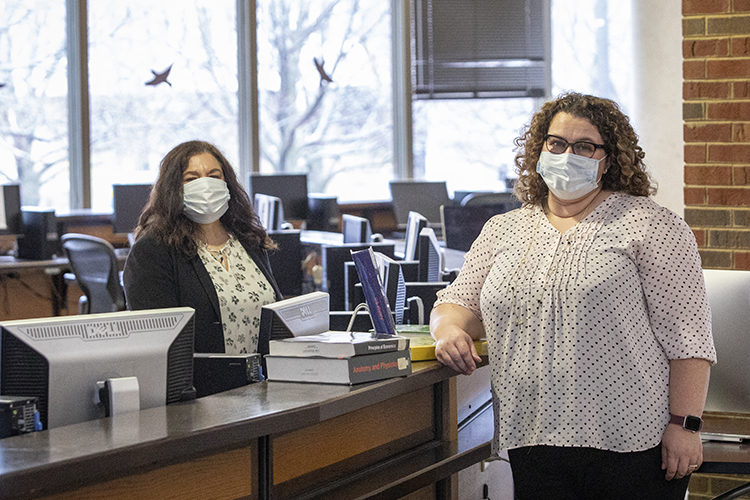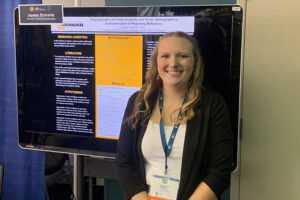Coordinators of a UWM project that allows instructors to use open-source educational materials instead of traditional textbooks for courses hope to expand the initiative that has saved more than $2.3 million for 19,000 students over the last five years.
The Open Textbook and Open Educational Resource Adoption Project began in 2016 in large part as a way to help address the rising costs of higher education. Open-source materials can include digital textbooks available at no cost, homework applications and online annotation tools.
The project is led jointly by the Center for Excellence in Teaching and Learning and UWM Libraries, and UWM was the first institution in the UW System to introduce an Open Educational Resource (OER) initiative. Currently, 16 UWM classes use open (no-cost) textbooks, mainly lower-level, general education courses that in the past would rely on expensive, traditional textbooks heavy enough to make a bookbag feel like a sack of bricks.
For instance, an open textbook used in a Psychology 101 course replaced a physical textbook that would cost $170. For a student who must work to help support their family, that could mean avoiding the difficult decision of whether to buy a textbook or pay a utility bill.
Fits UWM’s mission
Diane Reddy, director of UWM’s Center for Excellence in Teaching and Learning, said that the initiative falls in line with one of the university’s core missions to provide access to education for all. It also aligns with the university’s focus on becoming a more welcoming, student-centric institution by 2030.
“Financial aid today doesn’t cover costs,” Reddy said. “There are students that, if their car breaks down, that’s the end of college – they can’t do it.”
Psychology 2e, the open textbook used in the UWM class, is published by OpenStax, a nonprofit initiative at Rice University. According to the OpenStax website, the current, second edition of Psychology 2e has been used in nearly 1,800 classes nationwide and saved more than $129.4 million since it was first published in April 2020.
“From my perspective as an instructor, this also is about reducing barriers to student success because they have a textbook in their hand at the very beginning of the semester,” said Reddy, who’s also a professor of psychology at UWM.
More large-enrollment courses
Her goal is to have more instructors of large enrollment courses use open textbooks, and to focus open-textbook offerings for undecided students.
“If we’re talking big picture, I’d like to see OER as the first choice that an instructor explores at UWM,” Reddy said.
According to the College Board, the average student nationwide spends $1,240 per year on books and supplies at a four-year public institution. But average student spending on textbooks and digital course materials has steadily declined in recent years, the College Board report notes.
This in part reflects how more colleges and universities are using open textbooks, as well as more community colleges offering free or low-cost degrees, said Kristin Woodward, teaching and learning team lead at UWM Libraries. It also could reflect more students just choosing not to buy textbooks.
Starting with the Fall 2020 semester, the Schedule of Classes at UWM included a filter that allows students to see which courses are “no or low-cost textbook” offerings, which generally means $25 or less.
Expanding the use
During the shift to online learning over the last year because of the pandemic, the initiative shifted focus to expanding the use of open educational resources, which are materials or applications that are usually free for students.
The resources also are almost always openly licensed, which means that faculty members can edit course materials or cater offerings to better fit the class. For instance, UWM has started using Pressbooks, book production software that allows instructors to find, adapt, create and contribute educational content that can be accessed from a computer or mobile device.
Also, about three dozen instructors joined a CETL pilot project in the Fall 2020 semester to test “Hypothes.is,” an online, social annotation tool that Woodward said provided a virtual alternative for meaningful engagement among students. In a survey, faculty reported that the tool helped students become more active readers and better prepared for class discussion.
Instructors can benefit, too.
“OER gives faculty more control and the ability to quickly adapt to new areas of research or to put more focus on prioritizing diversity, equity and inclusion,” Woodward said. “This is the added value that OER offers that commercial textbooks do not offer faculty.”







